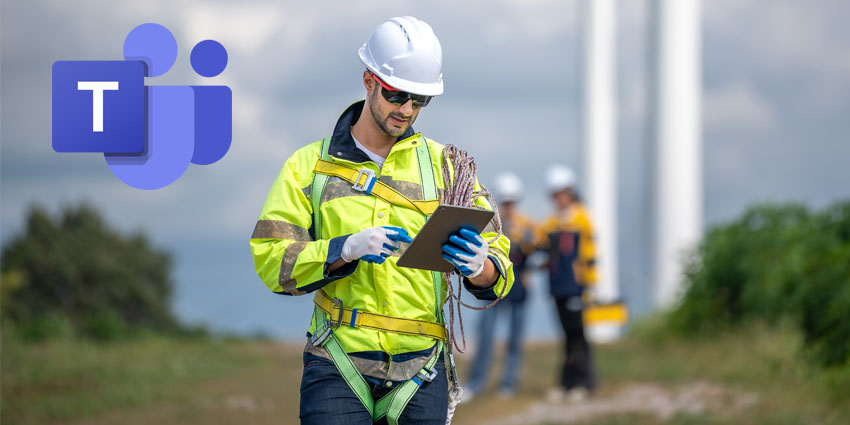As a publication dedicated to communication and collaboration, we’ve seen countless meeting room trends come and go. We’ve watched the rise, fall, and resurgence of huddle rooms, explored the benefits of focus rooms, and multifunctional conference spaces.
Now, we’re living in a world where AI avatars are attending meetings instead of people, intelligent systems are planning agendas, and entire town hall sessions take place in the metaverse.
The evolution of the modern meeting room is a natural side-effect of the broader, changing workplace. Office usage across industries is still inconsistent. Hybrid work policies continue to flex. Everyone wants to make their physical spaces more meaningful, sustainable, and cost effective. Even software stacks keep changing. So, what’s next?
The Major Meeting Room Trends Changing Collaboration
Everyone seems to have their own opinions on which meeting room trends will have the biggest impact on the future of work. But there are a lot of overlapping ideas. Our own research shows enterprise leaders still continue to focus on concepts linked to hybrid work, and artificial intelligence, for instance. But they’re also thinking about AV innovations, wellbeing, and sustainability.
Organizations like IACC, McKinsey, and even Gartner identify similar patterns. Here’s what’s really reshaping the enterprise workplace right now.
1. Immersive Meeting Room Trends
Okay, so we’re not working full-time in the metaverse just yet, but immersive tech is becoming more common. Even with some employers encouraging staff members to re-enter the traditional office room environment, remote and hybrid work is still commonplace.
This means companies need ways to effectively bridge the gap between distributed employees, whether they’re connecting in-office staff to remote workers, customers, or field-based employees. Immersive technologies have the power to strengthen the link between distributed staff.
A modern meeting room equipped with immersive tech can empower staff members to share content and work together on digital twin projects in a flexible space. Immersive meeting room trends can even improve employee relationships and feelings of inclusion.
Immersive meeting room tech isn’t limited to VR or MR headsets either. You might not have taken part in a virtual town hall with a VR headset and Microsoft Mesh just yet, but you’ve probably taken advantage of spatial audio in Microsoft Teams, or virtual video conferencing backgrounds.
For enterprise leaders, it’s no longer enough to deliver audio and video. The room must support engagement, reduce friction, and strengthen human connections.
2. The Increasing Presence of AI
Artificial Intelligence isn’t just responsible for some of the most significant meeting room trends today. It’s influencing every facet of the workplace. Virtually every meeting platform has a built-in AI assistant. Solutions like Copilot and Zoom AI Assistant aren’t just summarizing conversations.
They’re helping to detect speakers and presenters in conference sessions for better record keeping. They’re using sensors to identify and improve air quality and atmospheric conditions automatically. Some are connecting teams worldwide with intuitive instant translations.
These tools are helping to boost productivity, by identifying action items discussed in a meeting and assigning them to employees (like with Zoom Tasks). AI can even help with resource allocation, suggesting meeting spaces and resources to employees based on their needs (see Microsoft Places).
They’re also helping business leaders use and manage resources more effectively, with in-depth insights into engagement trends, usage patterns, device health and more.
More importantly, AI now connects to the wider enterprise tech stack. Notes and decisions can feed into project tools or CRMs. Room usage data informs planning. And with the right governance in place, the systems remain compliant and secure across global sites.
For large organisations, the priority is to avoid fragmentation. Choose meeting platforms that consolidate scheduling, AV control, and AI features in one interface, rather than layering tools across different systems. And make sure those platforms offer analytics you’ll actually use.
3. The Impact of Flexibility on Meeting Room Trends
One of the significant factors influencing meeting room trends in 2025 is the rise of new types of employees in the workforce. Some studies show that as many as five generations of employees work together in the same company. Every employee has distinct preferences, unique workflows to consider, and specific equipment they need to use.
That means flexibility is crucial. Rooms that used to be locked into one format now need to adapt to multiple use cases and people in one day. So what’s the fix? More modularity. Companies are equipping larger meeting spaces with flexible tools that can accommodate different types of workflows and both small and large teams.
Focus rooms and smaller meeting spaces are being leveraged with the help of plug-and-play solutions, like all-in-one video bars and reconfigurable furniture.
Increasingly, bring your own meeting, and bring your own device solutions are also becoming more popular. These allow employees to connect to existing meeting room technology with their own choice of conferencing apps and devices (smartphones, tablets, etc).
The goal isn’t just adaptability. It’s speed and scale. Facilities teams need spaces that can be reset quickly. IT teams need technology that can be supported centrally. Employees need rooms that work instantly, whether they’re in the office full-time or a few days a week.
4. Environmental Design, Comfort and Wellbeing
Environmental design and wellbeing aren’t always the first things to come to mind when you’re looking at the latest meeting room trends.
But sensory experiences remain crucial to productivity, year after year. From an environmental perspective, companies are investing in spaces that respond to the senses. That might mean tunable lighting systems that adjust based on time of day, weather, or task type.
In today’s hybrid world, how a meeting space is set up can make or break the conversation. Good lighting and sound don’t just polish appearances, they help everyone feel heard and included, especially when people are dialling in from different places.
From the perspective of wellbeing and employee experience, meeting rooms are becoming more customizable and inclusive. AI-powered systems can adapt room configurations based on meeting type or even known user preferences, automatically adjusting layouts for presentations versus standups, for example.
Accessibility is also improving. Real-time captioning, translation, and transcription are available in more languages and across more platforms. Sensors are a big change too. They can adjust brightness and contrast for those with visual impairments, and track air quality in real-time.
5. AV and Display Innovation
Screens, hardware, and endpoints have always been essential components of meeting room design for any organization. However, today’s meeting room trends push companies to look beyond simple systems. Today’s meeting room screens, for instance, don’t just “display information.”
Interactive touchscreens are everywhere, making planning, and design sessions more immersive. All-in-one displays, combining speakers, microphones, cameras, and AI assistants are becoming more common too. These systems are also becoming more flexible, capable of being moved and deployed in various settings, for the age of on-demand meeting rooms.
In larger conference meeting rooms, we’re seeing integrated AV walls and environments with in-ceiling microphone arrays, and noise blocking systems. Video and audio systems are increasingly being equipped with software that offers companies access to AI and intelligent optimization and allows each user to personalize their meeting experience. What’s more, we’re seeing the rise of various add-on solutions designed to improve AV experiences.
The way companies purchase and deploy meeting room hardware is evolving, too. Companies offer pre-built kits configured for specific meeting room sizes and software (like Microsoft Teams). We’re even seeing companies offer pay-as-you-go access to meeting room technology on demand, allowing users to hire the technology they need for each interaction.
Enterprise AV is also becoming more manageable. With cloud platforms, you can track and monitor systems from anywhere. IT teams can watch performance metrics, push updates, and troubleshoot remotely, all from the same interface.
6. Sustainability-driven Meeting Room Trends
Sustainability is a major focus of many vendors and enterprises exploring meeting room trends right now. It’s not just because consumers are becoming more concerned about the environment either.
Rising energy bills and tougher environmental rules are pushing companies to think harder about their carbon impact. Many are rethinking the basics, from the furniture they use to the hardware they buy. Sustainability is now baked into decisions: recycled materials, smart systems that cut energy use, and dashboards that track every watt. With the right tools, IT teams can shut down idle devices from miles away. Every bit of energy saved adds up.
Other software contributes, too. Virtual meeting platforms and immersive systems like Microsoft Mesh continue to reduce travel requirements. Integrated management and planning systems reduce the need for paper-based schedules, signage, or reporting.
Some enterprises are taking it further by shifting to circular procurement models. More companies are testing out rentals and modular AV setups that scale with demand. This not only saves money but also aligns better with sustainability goals. Want to lower your footprint? Start by asking suppliers the right questions about carbon emissions, recyclability, and how their gear plays with your existing systems.
7. Transformative Meeting Room Software and Room Management
Speaking of room and resource management, that’s improving too. While many of the major meeting room trends mentioned here have been related to hardware and room design, software for meeting rooms is improving fast.
Booking platforms are now tied into occupancy data, user preferences, and meeting history. Rooms can be assigned dynamically based on who’s attending, what tech is needed, and how the space has been used previously.
Employees are also using software to understand who’s in the office and when. Some platforms (like Microsoft Places) now allow users to reserve a desk or a meeting slot based on colleague availability, improving the odds of meaningful in-person collaboration.
Beyond scheduling, smart room management platforms also handle device status, usage patterns, environmental controls, and security settings. This helps IT and facilities teams reduce downtime, detect underused assets, and better allocate space.
For companies with rotating teams or flexible work patterns, these systems also support on demand meeting rooms, spaces that can be booked and reconfigured quickly depending on the day’s needs. Automated check-ins, usage tracking, and no-show detection ensure that rooms stay available and are actually used.
8. Data-Driven Decision Making and Meeting Room Trends
Today, organizations are asking a different set of questions about their meeting rooms. How often are they used? Are they sized appropriately? What types of meetings happen where, and which tools are actually being used? These questions need data.
Modern meeting room tech and UC service management platforms are unlocking access to that data, making businesses more proactive and strategic.
Sensors tell you when a room is used, or when it’s just sitting empty. Smart booking tools flag patterns and no-show rates. Even AV systems now report back on hardware performance and user behavior. Combined, this gives workplace teams a clear picture: which spaces are working, which aren’t, and where there’s room to trim costs or repurpose square footage.
Meeting room software also tracks how meetings unfold. Some tools measure active participation, time spent per agenda item, or follow-through on assigned actions. These signals give department leads and operations teams more insight into collaboration effectiveness, and where there may be friction.
Enterprise buyers are starting to use this data for real estate planning. If smaller on demand meeting rooms are used more than large ones, space can be repurposed. If specific tools see low usage, licensing can be reduced or redirected. Over time, this drives both cost control and experience improvement.
9. Cybersecurity and Compliance in Meeting Room Tech
As meeting tech gets more advanced, so do the risks. A smart whiteboard or shared screen might be convenient, but it can also be an entry point for sensitive data leaks. Teams have to think beyond firewalls. Every device from AI cameras to VR headsets needs to be secured. Businesses need clear policies around what data is collected, where it’s stored, and who can access it after the meeting ends.
Security breaches linked to collaboration tools are still relatively rare, but they’re rising. Vendors are now under greater pressure to offer end-to-end encryption, secure authentication, and admin visibility over every interaction, especially when meetings involve external participants, regulated industries, and AI.
Physical security is also part of the picture. Facial recognition, room access control, and AI-driven presence detection are being deployed in larger enterprises. These technologies improve compliance and user tracking, but they require strict policy controls as well.
If you’re investing in meeting room trends right now, ask vendors to document their full security architecture. Explore encryption protocols, cloud data policies, and audit capabilities. Features like voice assistants and auto-recording are helpful, but only if they don’t cross privacy lines.
Organizations subject to strict rules (think GDPR, HIPAA, SOC 2) must ensure that every piece of meeting room tech meets compliance standards. Better still, those features should be easy to control, centrally managed, and fully documented.
The Meeting Room Trends You Can’t Ignore
Meeting rooms aren’t just places to sit and talk anymore. They’re environments purpose-built to support focus, creativity, and connection. As hybrid work becomes a long-term reality, companies are designing their spaces with intention.
The meeting room trends we’ve outlined here, from immersive design and intelligent AV to smart scheduling, wellbeing-focused layouts, and data-driven decision-making, are already being implemented in enterprises across sectors. The leaders getting results aren’t just throwing new tech at old problems. They’re reimagining how digital and physical spaces can work together to enable better collaboration, not just more meetings.
Are you ready to really upgrade your approach to Unified Communications, with a collaborative-first focus? We’re here to help every step of the way.
- Check out the top Hybrid Meeting Platform Vendors for an insight into the innovators transforming collaboration and the future of work.
- Explore our market maps for a behind-the-scenes look at companies revolutionizing small meeting rooms, mid-sized meeting spaces, and large conference rooms.
- Download our latest research reports, or join the thriving UC Community to stay one step ahead of upcoming trends and opportunities.
Prepare yourself, your company, and your team for the future of work.







